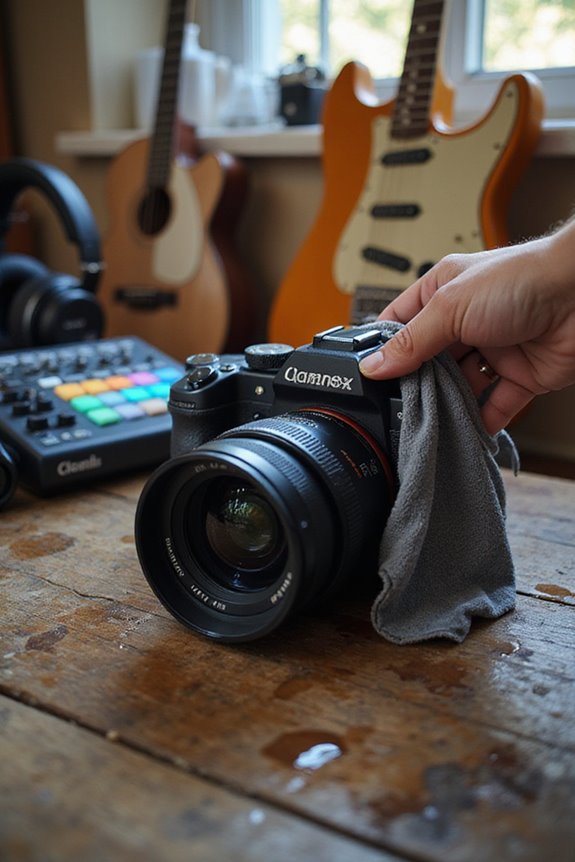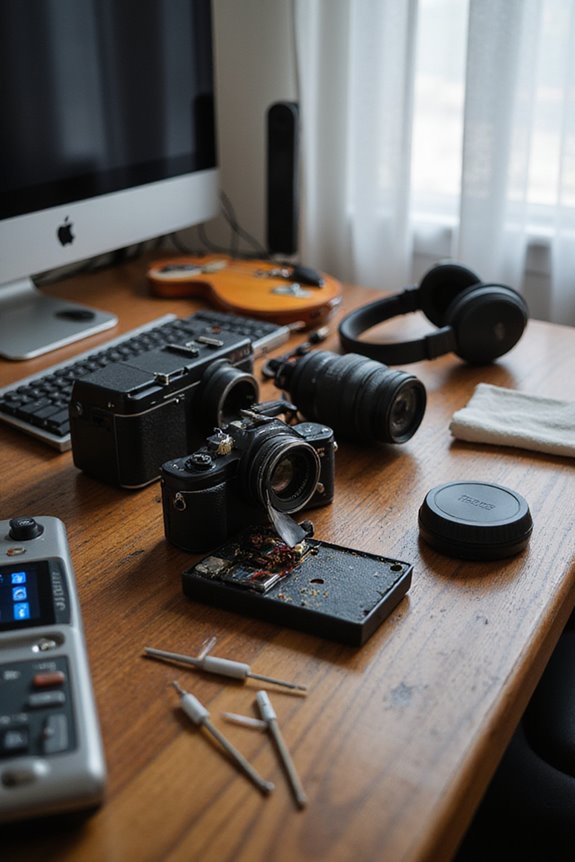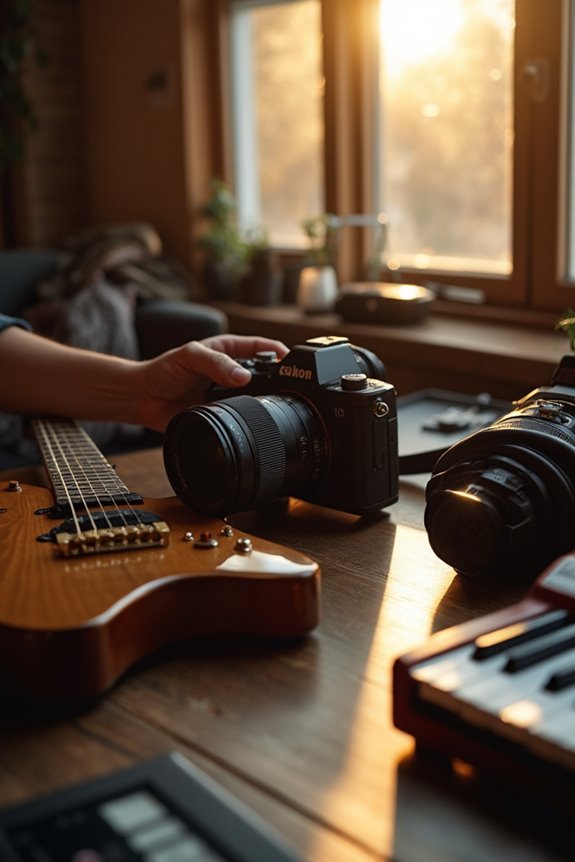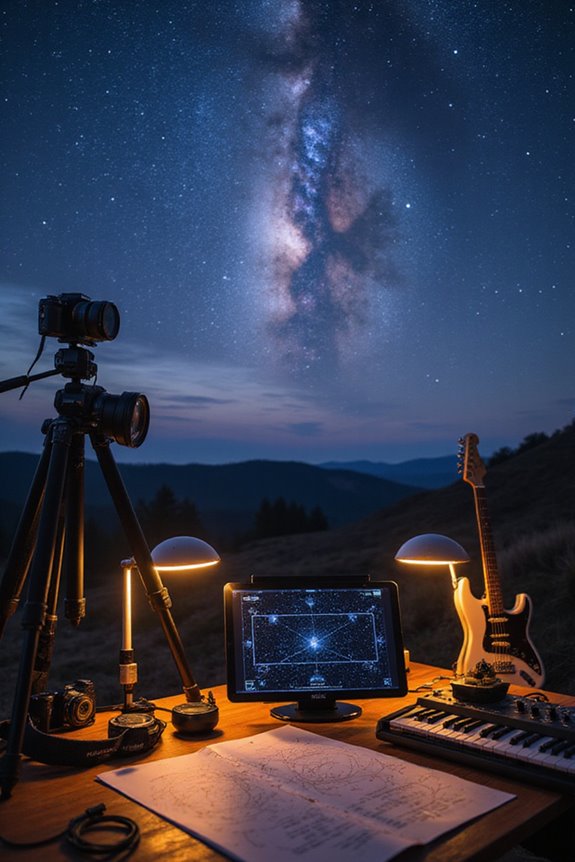Calibrating our camera monitors at home is essential for achieving accurate color representation. By using quality calibration tools like the Calibrite Display 123 or Datacolor Spyder X2 Ultra, we can guarantee our images appear as intended across different displays. Following a clear step-by-step process helps us engage effectively with our setup, minimizing shadows and reflections. Understanding environmental factors like temperature and humidity also enhances accuracy. Keep reading to discover more about software options and the benefits of calibration.
Key Takeaways
- Use quality calibration probes or colorimeters to ensure accurate color representation on your camera monitor.
- Maintain a stable environment free from shadows and reflections during the calibration process.
- Capture images from various angles and distances to assess monitor performance effectively.
- Utilize compatible software like DisplayCAL for thorough analysis and optimization of monitor settings.
- Regularly recalibrate your monitor, considering environmental factors like temperature and lighting conditions.
The Importance of Monitor Calibration
When we think about our work in photography or video editing, the clarity of color representation becomes vital. Monitor calibration directly influences color accuracy, adjusting our devices to meet established calibration standards. Without this important step, the colors we see can vary dramatically between screens, leading to inconsistent visual experiences. For instance, a vibrant blue might look dull on an uncalibrated monitor, affecting our edits and creative choices. Accurate calibration guarantees that our images appear as intended, whether displayed digitally or in print. By maintaining consistent color across our devices, we bolster our workflows, ultimately delivering higher-quality work to clients. Regular recalibration keeps our monitors performing at their best, allowing us to trust our on-screen previews without second-guessing our decisions.
Essential Tools for Effective Calibration
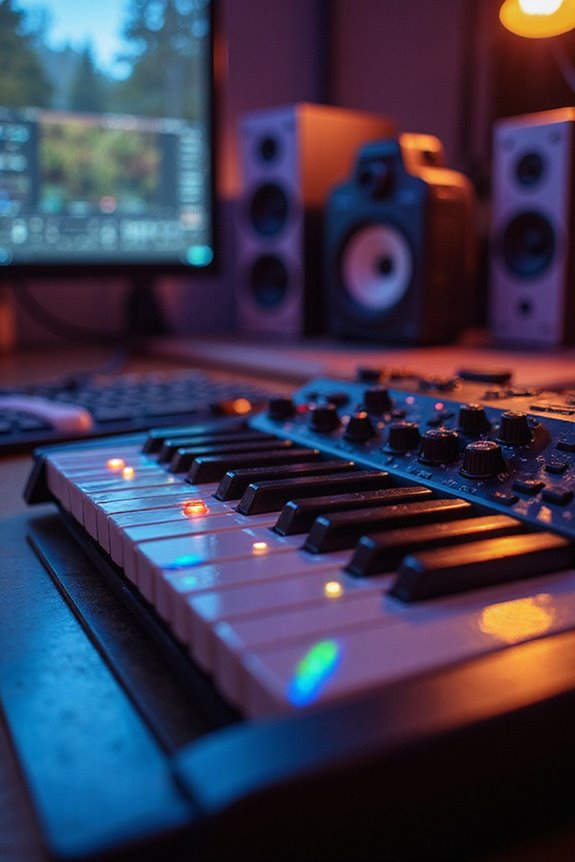
Effective calibration hinges on using the right tools, which can make all the difference in achieving accurate color representation. We should start with quality calibration probes and colorimeters. High-end options like the Klein Instruments K-10A excel in handling brightness levels well beyond 2000 nits, guaranteeing calibration accuracy across diverse monitor technologies. While professionals may prefer these high-end tools, entry-level choices such as Calibrite Display 123 offer reliability for standard setups.
Next, we can’t overlook software compatibility. Selecting programs like DisplayCAL guarantees thorough calibration processes, enabling us to adapt to various ambient light conditions. Using the right measurement standards ultimately leads to superior color fidelity—essential for any serious photographer or videographer!
Step-by-Step Calibration Process
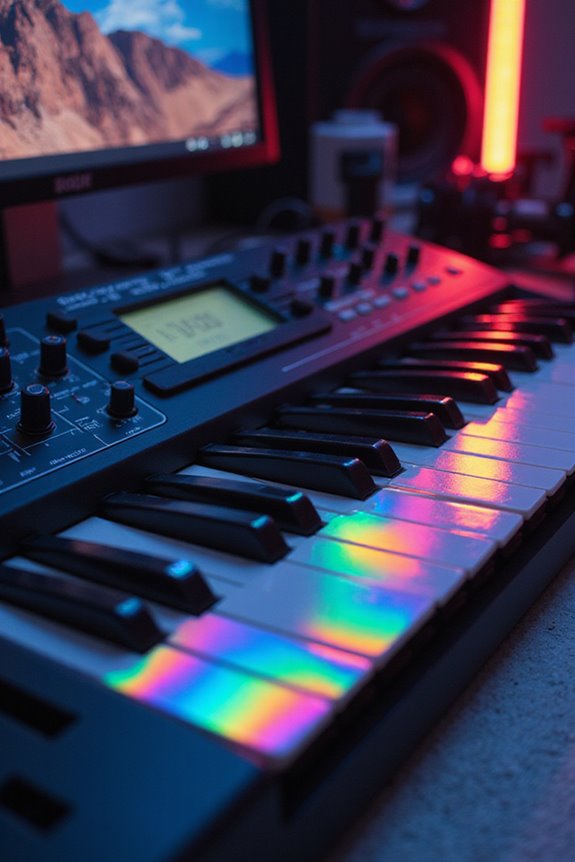
To achieve ideal results in monitor calibration, it’s essential to follow a systematic step-by-step process. First, we prepare our calibration patterns—like a chessboard grid—printed on a rigid surface. We choose a stable environment to minimize shadows and reflections, ensuring the pattern is easily detectable.
Next, we engage in image capture by positioning the pattern at various angles and distances, capturing numerous images to enhance calibration robustness. Careful focus and stabilization are vital during this process.
Finally, we load the selected images into software designed to analyze them, guiding us through the calibration steps. This transforms our settings, optimizing our monitor to display accurate colors, a significant benefit for our imaging work.
Software Options for Monitor Calibration
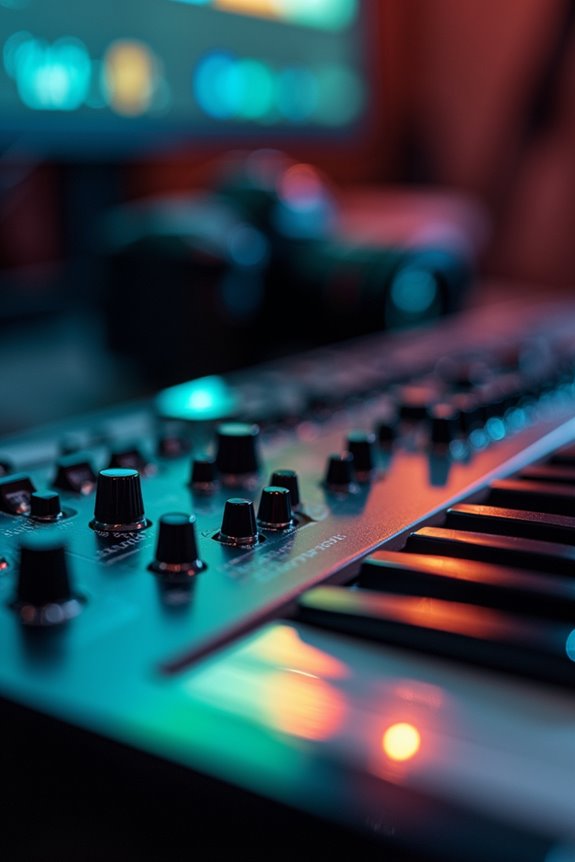
Calibrating our monitors is essential for achieving true color accuracy, and selecting the right software can make all the difference. For professional needs, tools like Calibrite Display Plus HL are fantastic, especially for high-luminance screens. If we’re looking for something user-friendly, X-Rite ColorMunki Display balances performance with a straightforward interface, perfect for hobbyists. Datacolor’s Spyder X2 Ultra offers ambient light monitoring, which dynamically adjusts settings based on surroundings, though it’s not OLED-compatible. For those needing multi-monitor setups, consider SpyderPro, ensuring color matching across displays. Finally, Datacolor Spyder Print Studio integrates both monitor and printer calibration, enhancing our workflow between digital and print media. Ensuring software compatibility with our hardware is key in maximizing calibration effectiveness.
Environmental Factors Impacting Calibration
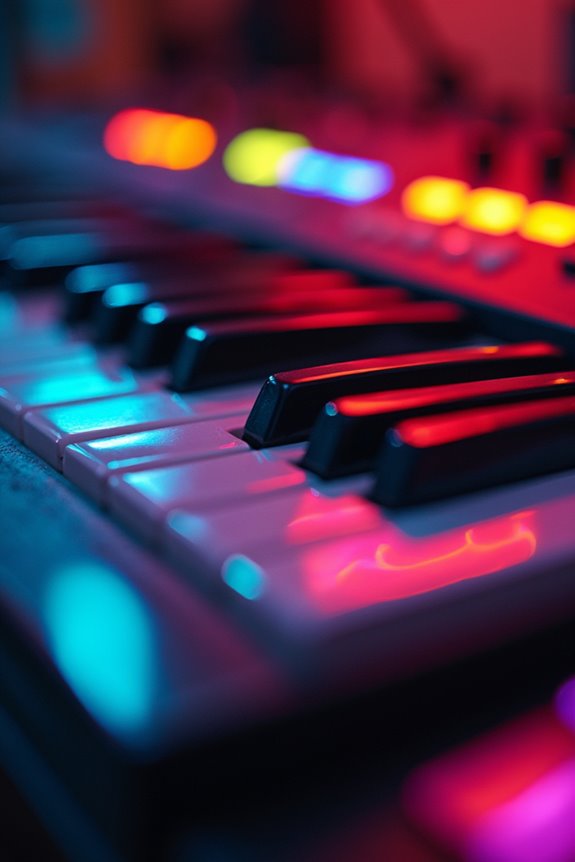
When we think about calibration, it’s hard to ignore the significant role environmental factors play in the process. Temperature stability is vital; even small fluctuations can lead to inaccurate color and brightness readings. Similarly, humidity control is critical, as excessive moisture can distort sensor performance, impacting calibration results. We should also consider lighting conditions—natural light changes throughout the day, which can affect our perception of color. Air quality shouldn’t be overlooked, either; dust and pollutants can interfere with accurate readings. To guarantee environmental consistency, we may need to adjust the calibration frequency based on these factors. By creating a stable calibration environment, we can achieve better monitor performance and more reliable results.
Benefits of At-Home Calibration
At-home calibration can be a game-changer for anyone serious about achieving color accuracy and consistency in their work. By ensuring our monitors display accurate colors from the start, we can reduce printing and production errors, leading to substantial cost savings. With reliable color representation, we spend less time on corrections and adjustments, streamlining our post-production workflow.
Moreover, consistent color output across our devices helps us maintain professional standards and meet client expectations. This uniformity not only enhances our collaborative projects but also builds our reputation as reliable visual storytellers. Ultimately, regular calibration allows us to work confidently within various color spaces, ensuring predictable color reproduction essential for achieving stunning results.
Limitations and Considerations for Calibration
Achieving accurate color calibration is a remarkable feat, but it does come with its share of limitations and considerations. We face calibration challenges like differences in white point precision and color gamut between monitors. For instance, modifying the white point from its native setting can degrade image quality, so choosing a primary monitor for editing is often more effective. Environmental factors, such as ambient lighting and glare, directly affect our color perception, impacting calibration results. Additionally, not all calibration software perfectly supports every monitor model, which can limit effectiveness. Ultimately, calibration is an ongoing process requiring periodic repetition to adapt to changes in both ambient conditions and monitor characteristics. Keeping these factors in mind helps us achieve better results in our calibration efforts.
Frequently Asked Questions
How Often Should I Recalibrate My Monitor?
When considering calibration frequency for monitor maintenance, we recommend checking monthly for color-critical tasks and every few months for general use. Regular calibration helps guarantee our displays remain accurate and reliable for our projects.
Can I Calibrate My Monitor Without a Colorimeter?
Yes, we can calibrate our monitors without a colorimeter using DIY calibration techniques. By leveraging software options and online test patterns, we can improve our monitor’s image quality and achieve a more accurate display.
What Impact Does Monitor Resolution Have on Calibration?
When we focus on monitor resolution, it’s like peering through a crystal lens—every detail sharpens. Without resolution accuracy, we risk monitor pixelation, clouding our image clarity and distorting the vibrant colors we crave.
Should I Calibrate My Monitor for Different Room Lighting?
Absolutely, we should calibrate our monitors for different room lighting. By adjusting our monitor settings, we guarantee accurate color representation and reduce eye strain, making our viewing experience much more enjoyable and effective.
How Can I Tell if My Monitor Needs Calibration?
We should look for signs of color accuracy issues, like unexpected color casts or visible banding. If our images lack visual consistency across devices, that’s a clear indication our monitor needs calibration.


